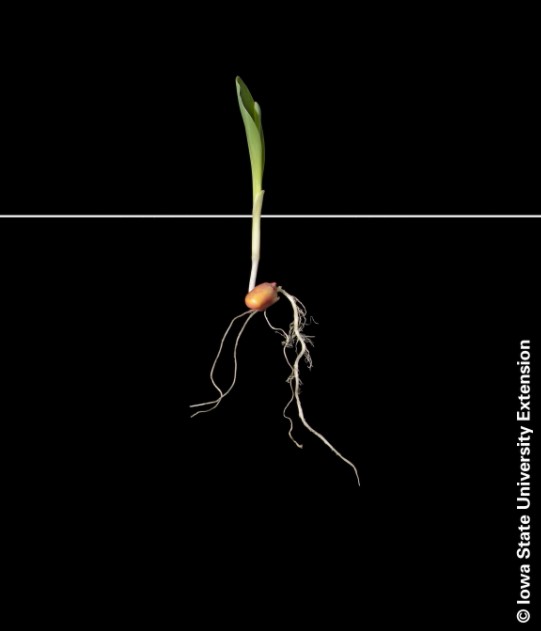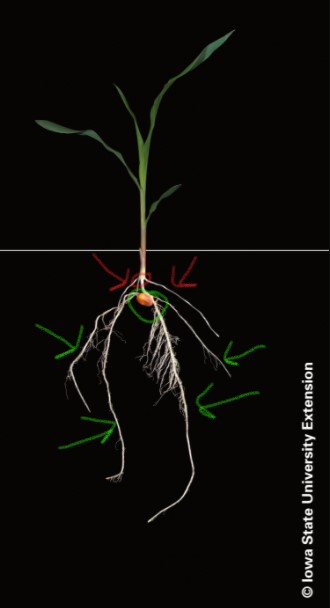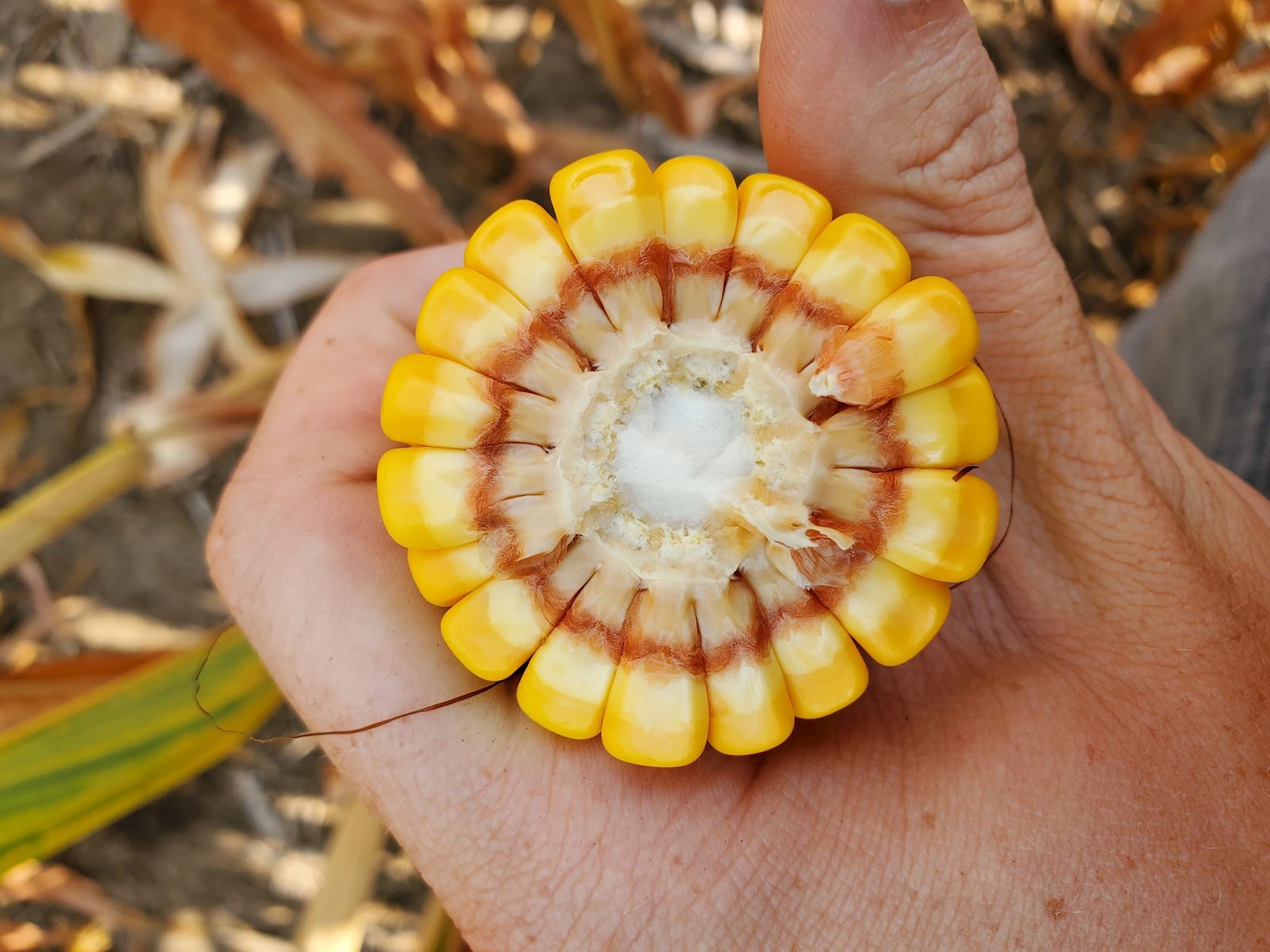December 11th, 2020
posted
by Andrew Blomme on 12/11/2020
in
Weekly Newsletter

December 11th, 2020
A corn plant does quite a bit of work to produce grain. Most of that work goes by unnoticed but is very important. This week we will be looking at what is going on within a corn plant as it progresses through it's growth stages.
Corn Growth Stages
Iowa State University created the corn leaf collar staging method. The following link is from Iowa State Extension and covers corn growth staging: Iowa State Extension-Corn Growth Stages. This link provides an easy way to understand corn staging whether this is the first time you've heard of growth stages or need just a refresher. It is important to understand the growth stage of a crop to effectively scout that crop
Emergence
When a corn seed is planted the work starts. The seed absorbs water, starts metabolizing starch, and sends out the radicle (root shoot) first. After the radicle comes out the shoot that will become the above ground portion of the plant emerges and works it's way to the soil surface. It typically takes between 90-120 GDDs after planting for a seedling to emerge. The picture below is from Iowa State Extension. You can see the radicle on the right side of the seed working downwards.

V1-V5
This early portion of a corn plant life is important for what will come later on. Within the seedling, all the leaves the plant will have at maturity are being formed. Below the ground, the plant is developing a whole new root system. The picture shows the two root systems of a corn plant. The green arrows point to the radicle and what are called seminal roots. These are roots that emerge from the seed that gather water and nutrients at the very beginning of a corn plant's development. The red arrows point to "nodal" roots. The nodal root system will be the main root system for majority of a plant's life.

While there are only 2 nodal roots at this young stage of the plant, there is the potential for this plant to have around 80 nodal roots at maturity. A corn plant switches from using it's seminal root system to using it's nodal root system from the stages V2 to V5 (fifth leaf). This transition between root systems can contribute to the "Ugly Corn Phase" as the nodal roots look for water and nutrients.
V6
A lot happens in a corn plant at the stage V6 (sixth leaf is collared). At this point, all the leaves a corn plant will make are already formed and tightly packed away to emerge later. At V6, a corn plant is starting to focus on reproduction (grain). The number of kernel rows around is determined at this time. Kernel rows occur in pairs so you will see 14,16,18, etc rows around an ear. The picture below is an ear that has 18 kernel rows. Plant stress at this stage can limit the number of kernel rows around a plant will develop.

Up until this point the growing point of a corn plant was below the soil. The growing point is the area of cell division and growth of a plant. After V6 the growing point of a corn plant is finally above the ground. As a result, that growing point is susceptible to damage from hail, wind or equipment that can be fatal.
Late Vegetative Stages
Growth begins to happen very rapidly in the later vegetative stages of a corn plant. Early in a plant's life it would take 84 GDDs to each new leaf to emerge. After V10, it only takes around 56 GDUs for each new leaf to emerge. This is due to the plant having more leaf area to capture sunlight later as it develops further. In June as the days get hotter and the sun shines longer a corn crop can add a new leaf every 2-3 days.
From V11-V15 the number of kernels down the length of the ear is determined. Stress at this point can also negatively effect the number of kernels developed. At this point the ear has all the potential kernels it will ever have.
There is a lot going on early in a corn plant's development. Understanding the processes going on within a plant helps more effectively scout during the growing season. Next week we will discuss what is occurring in a corn plant after the tassel emerges.